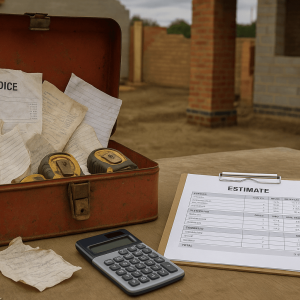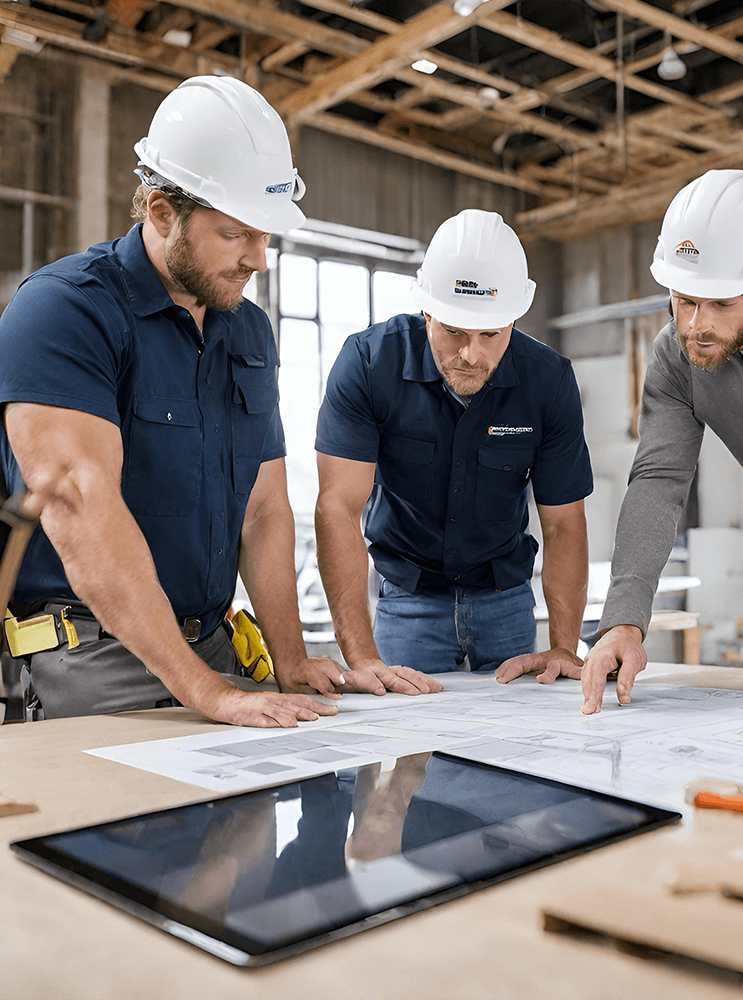Building your dream home can be an exciting and fulfilling experience, but it can also be daunting, especially when it comes to understanding the various aspects of residential construction estimates. The process of estimating the cost of building a home can be complex, and it’s important to have a thorough understanding of it to ensure that you get the best value for your money. As a skilled assistant with expertise in digital marketing and content writing, I am here to help you demystify the process of residential construction estimates.
In this ultimate guide, we’ll cover everything you need to know about the various elements of construction estimates, including the factors that influence the cost of building a home, the different types of estimates, and how to read and understand a residential construction estimate. By the end of this guide, you’ll have a clear understanding of what goes into a residential construction estimate and how to ensure that your dream home is built within your budget.
Understanding the Types of Estimates
Before we dive into the details of what goes into a residential construction estimate, it’s important to understand the different types of estimates. There are typically three types of estimates that are used in residential construction: the rough estimate, the preliminary estimate, and the detailed estimate.
The rough estimate is the first estimate that is created when planning a residential construction project. It is a quick and rough estimate of the cost of the project and is used to determine if the project is feasible and within the budget of the homeowner.
The preliminary estimate is a more detailed estimate that is created once the project has been approved. It takes into account more specific details of the project, such as the materials that will be used, the size of the project, and the labor costs.
The detailed estimate is the final estimate that is created before construction begins. It is the most accurate estimate and takes into account all of the details of the project, including the cost of materials, labor, and any additional expenses that may arise during construction.
Understanding the types of estimates is important because it helps homeowners to determine the level of detail they need in their estimate. A rough estimate may be sufficient for some projects, while a detailed estimate may be necessary for others.
Factors Affecting Residential Construction Estimates
There are many factors that can influence the cost of building a home, and it’s important to understand these factors when creating a residential construction estimate. Some of the most important factors that can affect the cost of construction include:
Location
The location of the home can have a significant impact on the cost of construction. Homes that are located in areas with high labor costs or expensive building materials may cost more to build than homes in areas with lower costs.
Size and Complexity
The size and complexity of the home also play a role in the cost of construction. Larger homes with more intricate designs will generally be more expensive to build than smaller, simpler homes.
Materials
The cost of materials is another important factor to consider when creating a residential construction estimate. High-end materials will cost more than standard materials, and the cost of materials can vary depending on the location of the home.
Labor Costs
Labor costs are another important factor to consider when creating a residential construction estimate. The cost of labor can vary depending on the location of the home and the level of expertise required for the project.
Building Code Requirements
Building code requirements can also impact the cost of construction. Homes that are built in areas with strict building codes may cost more to build than homes in areas with less stringent requirements.
By understanding these factors, homeowners can get a better idea of what goes into a residential construction estimate and how they can work with their contractor to ensure that their dream home is built within their budget.
The Importance of Accurate Estimates
Accurate estimates are essential for any residential construction project. They help homeowners to determine whether their project is feasible and within their budget, and they provide contractors with a clear picture of the costs associated with the project.
Inaccurate estimates can lead to cost overruns and delays, which can be frustrating for homeowners and contractors alike. That’s why it’s important to ensure that your residential construction estimate is as accurate as possible.
Creating an accurate estimate requires gathering comprehensive project information. This includes costs of materials, labour, and any potential extra expenses during construction. It’s also crucial to work with an experienced contractor. They can provide a detailed breakdown of your project’s costs.
How to Create a Residential Construction Estimate
Creating a residential construction estimate can be a complex process, but it’s essential for ensuring that your project is completed within your budget. Here are the key steps to creating a residential construction estimate:
Step 1: Gather Information
The first step in creating a residential construction estimate is to gather all of the necessary information about the project. This includes the size and complexity of the home, the materials that will be used, and the labor costs associated with the project.
Step 2: Estimate Labor Costs
Once you have gathered all of the necessary information, the next step is to estimate the labor costs associated with the project. This includes the cost of hiring contractors and any additional labor costs that may be required.
Step 3: Estimate Material Costs
The next step is to estimate the cost of materials that will be used in the project. This includes the cost of building materials, such as lumber and concrete, as well as any finishing materials, such as paint and flooring.
Step 4: Estimate Overhead and Profit
After estimating labour and material costs, the next step is overhead and profit calculation. This step considers extra expenses like permits and insurance. It also includes the contractor’s profit.
Step 5: Create Your Estimate
The final step is to put all of the information together to create your residential construction estimate. This should include a detailed breakdown of the costs associated with the project, as well as any additional information that may be relevant to the project.
Techniques for Estimating Labor Costs
Estimating labor costs is one of the most important aspects of creating a residential construction estimate. Here are some techniques that can be used to estimate labor costs:
Hourly Wage
One of the simplest techniques for estimating labor costs is to use an hourly wage. This involves determining the number of hours that will be required to complete the project and multiplying that by the hourly wage of the workers who will be involved in the project.
Per Square Foot
Another technique for estimating labor costs is to use a per square foot rate. This involves determining the total square footage of the project and multiplying that by a predetermined rate per square foot.
Unit Cost
Using a unit cost is another method to estimate labour costs. It involves calculating the cost for each task. Then, you multiply it by the required units. These techniques help homeowners. They provide a clearer understanding of their project’s labour costs. This ensures more accurate construction estimates.
Estimating Material Costs
Estimating material costs is another important aspect of creating a residential construction estimate. Here are some techniques that can be used to estimate material costs:
Quantity Survey
One of the most accurate techniques for estimating material costs is to use a quantity survey. This involves creating a detailed list of all of the materials that will be required for the project and determining the cost of each individual item.
Cost Per Unit
Another technique for estimating material costs is to use a cost per unit. This involves determining the cost of each individual item and multiplying that by the number of units that will be required.
Supplier Quotes
Another technique for estimating material costs is to obtain quotes from suppliers. This involves contacting suppliers and obtaining a quote for the materials that will be required for the project.
By using these techniques, homeowners can get a better idea of the material costs associated with their project and ensure that their residential construction estimate is as accurate as possible.
Estimating Overhead and Profit
Estimating overhead and profit is the final step in creating a residential construction estimate. Here are some techniques that can be used to estimate overhead and profit:
Percentage of Total Cost
One of the most common techniques for estimating overhead and profit is to use a percentage of the total cost. This involves determining the total cost of the project and adding a predetermined percentage to cover overhead and profit.
Fixed Fee
Another technique for estimating overhead and profit is to use a fixed fee. This involves determining a fixed fee that will cover overhead and profit and adding that to the total cost of the project.
By using these techniques, homeowners can ensure that their residential construction estimate includes all of the necessary information, including overhead and profit.
Common Mistakes in Residential Construction Estimates
Creating a residential construction estimate can be a complex process, and there are many common mistakes that homeowners and contractors can make. Here are some of the most common mistakes to avoid:
Overestimating or Underestimating the Scope of the Project
One of the most common mistakes in residential construction estimates is overestimating or underestimating the scope of the project. This can lead to cost overruns and delays, and it’s important to ensure that your estimate accurately reflects the scope of the project.
Failing to Include all of the Necessary Costs
Another common mistake in residential construction estimates is failing to include all of the necessary costs. This can include costs such as permits, insurance, and taxes, and it’s important to ensure that your estimate includes all of these costs.
Failing to Account for Contingencies
Another common mistake in residential construction estimates is failing to account for contingencies. This can include unexpected expenses that may arise during construction, such as weather delays or material shortages.
By avoiding these common mistakes, homeowners and contractors can ensure that their residential construction estimate is as accurate as possible.
Residential Construction Estimating Software
Residential construction estimating software can be a valuable tool for homeowners and contractors. This software can help to automate the estimating process, making it faster and more accurate.
Numerous types of construction estimating software exist. Choosing one that fits your needs is crucial. Some are tailored for contractors. Others better serve homeowners. Using such software can help. It ensures accurate estimates. It also ensures projects stay within budget.
Conclusion
Creating a residential construction estimate is crucial. It helps build your dream home within budget. Understanding different estimate types is key. Knowing factors that influence cost also helps. This includes the techniques for labor and material cost estimates. Homeowners can thus create accurate project scope estimates. Avoiding common mistakes is vital too. Using estimating software can help. This ensures projects are completed on time and within budget.
As construction technology advances, so does the future of estimating in the construction industry, moving towards more efficient and convenient methods. Nowadays, for building cost estimator UK, house construction cost, there are digital tools such as our software that make the estimation process quicker and more accurate, which is becoming increasingly relevant for professionals and businesses. This trend makes learning about cost estimating essential for those in the Construction industry, regardless of experience, and understanding the skills required to undertake this role – such as identified in what a cost estimator does, will help pave the way to pursuing a career in this field.
Building Cost Calculators:
To get accurate, up to date construction costs, use our FREE Building Cost Calculators:











